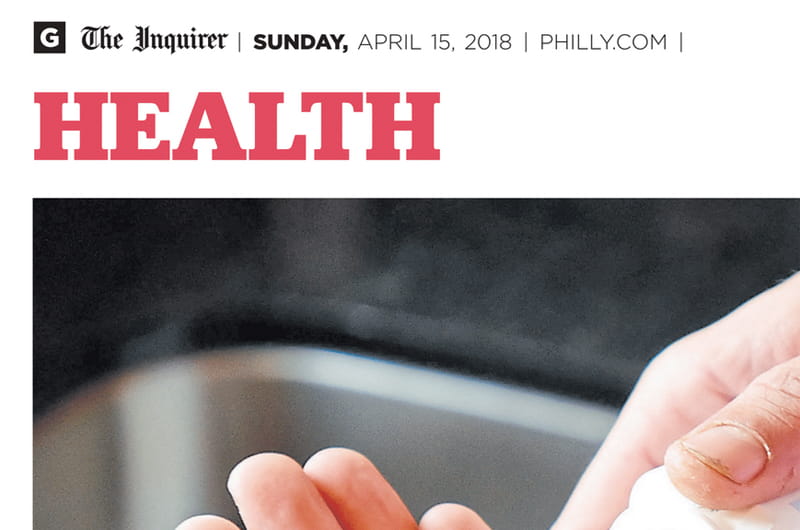Philadelphia Area Hospital Ads All ‘From the Same Playbook,’ Study Finds
 By Frank Otto
By Frank Otto

- Drexel’s College of Nursing and Health Professions Receives $1 Million for Scholarships from the Bedford Falls Foundation – DAF to Address Nursing Workforce Shortage
- U.S. Department of Education Provides Final Approval of Drexel and Salus Merger
- Spotting Bad Batteries Before They Malfunction
- When Climate Disasters Hit, They Often Leave Long-term Health Care Access Shortages, Drexel Study Finds

Hospitals in the Philadelphia area may all be using the same playbook when it comes to advertising themselves, a new Drexel University study indicates.
Looking at the way hospitals in the city and its surrounding counties have advertised themselves every Sunday in the Philadelphia Inquirer’s Health section, most were found to have used patient stories first and foremost, with touting their health professionals a close second.
“We concluded that hospitals are true to the marketing objective of ‘winning the hearts’ of healthcare consumers by using patients in the main model in ads,” said Caichen Zhong, one of the study’s lead authors and a researcher with the College of Nursing and Health Professions at Drexel.
The study, co-authored by Stephen Gambescia, PhD, a clinical professor in the College of Nursing and Health Professions, will be published in Health Marketing Quarterly this fall.
With more than 200 hospitals, the Philadelphia region has one of the highest concentrations of medical services in the United States. So, to see how hospitals set themselves out from such a tight pack, the Drexel researchers decided to look at every available hospital ad in the Health section of the Philadelphia Inquirer, from its inception in 2013 until April 2016.
For the analyzed three-year span, it was discovered that very few of the ads featured medical technology or specialized procedures that might have helped hospitals to differentiate themselves. Branding was also not the main feature of many ads. This was counter to what was hypothesized.
“We believe that hospital advertising creative teams may be using the same ‘playbook’ and sticking to traditional and safe attributes, using patients and health professionals most,” said Gambescia. “There is nothing wrong with using ‘high touch’ advertising attributes and focusing on patients. But it flies in the face of a primary marketing principle: Differentiating yourself from your competitors.”
Analyzing 168 ads, the researchers looked to see what attributes were emphasized in each, dividing them into primary impressions and secondary impressions. Basically, that means they figured out what jumped out at a reader first, then second, whether that meant words or images.
For example, in an ad about a cardiac care unit, a large, main image featuring a middle-aged man would be the first impression, classified as a “patient.” If the hospital’s logo were the next thing someone noticed, “brand” would be the secondary impression.
Overall, the most-used primary attribute was “patients,” appearing in 35 percent of the ads. The next was “health professionals,” at 27 percent.
At the other end of the spectrum, “technology” and “procedures” were primary attributes just 4 and 3 percent of the time, respectively.
However, “branding” was the most frequent secondary attribute, coming up 33 percent of the time in that capacity.
“Branding is a way to gain frequency exposures, telling readers, ‘We are the best,’ or, at least, ‘We are here to serve you,’” Zhong explained. “Hospitals use branding as a generic differentiator. Advertising is a long-term process and consistency is important. We expected to see higher use of branding as a primary attribute in this study.”
In the past, Gambescia performed similar studies analyzing higher education print and online advertising. He thinks he may have encountered the same thing in each arena: Marketing people can sometimes get in the way.
“Hospital — and higher-ed — ads are the result of an amalgamation of internal marketing folks, an external creative team and, ideally, some subject-matter person who knows about the product or service,” Gambescia said. “That latter person is often left out.”
It might not be a panacea, but Gambescia feels that the homogeneity in ads could be broken up a bit with a voice outside the usual marketing team.
“They may know just enough to spot something that may be more aligned with the reality of the product or resonate with the audience,” he explained.
Something completely absent from the ads was references to “population health” or “public health.”
“Hospitals have made attempts, no doubt, to be — and be seen — as a service to the community, not just those sick within their four walls,” Gambescia said. “But most say hospitals give lip service to population health.”
Going forward, Gambescia feels it’s important to investigate whether this lack of attention in ads is merely due to hospitals’ marketing strategy or another sign that they’re ignoring an important part of their mission.
“We need to learn why they are totally averse to saying anything about population health, or whether they just don’t realize they are not messaging this way,” Gambescia concluded.
In This Article
Contact
Drexel News is produced by
University Marketing and Communications.